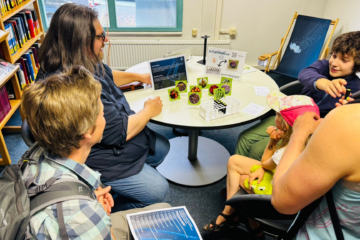I November 25, 2021, 1 p.m. I
Olfaction is perhaps the most fundamental among senses in the animal kingdom. It plays a crucial role in almost all relevant aspects of life such as finding food and assessing its quality, locating mating partners, avoiding predators. Olfaction works where visual and auditory senses fail, e.g., over long distances, in cluttered terrain, or in darkness. Chemical sensing also has huge potential in the technical domain, but current technical solutions lag dramatically behind the capabilities of their biological counterparts.
Research in biological olfaction has recently uncovered several principles that could be relevant to improve technical devices. Insights from Chemistry, Fluid Dynamics and Neuroscience converge to shape our understanding of Odor Space—that is, the chemical, physical, neuro-computational and behavioural aspects of odor percepts.
In this presentation I will show recent results that address Odor Space from the chemical and physical angle. I will shed some light on ways to chart chemical space and decipher the logic of olfactory coding in the brain. I will also discuss how to access and decode the information encoded in turbulent plumes, the challenges this poses to current sensor technology, and bio-inspired solutions to this problem. These considerations give rise to a framework for efficient computing in the olfactory domain, demonstrated with an event-based agent navigating towards a gas source. Such agents could ultimately provide a platform to investigate models of olfactory computation in the brain.
Brief CV
Dr Schmuker’s research aims at translating algorithms and processes from biology and the brain into solutions for data science and machine learning. He is a pioneer in neuromorphic computing, an emerging technology that takes inspiration from the brain to achieve low-power and low-latency AI. He and his team develop event-based algorithms for neuromorphic olfaction, that is, low-latency detection and identification of chemical signals.
Another area of special interest is the decoding of “Odour Space”, that is, the chemical features that capture the properties of odorant molecules. Dr Schmuker and his team apply machine learning methods to discover structure-activity and structure-odour relationships in odorant databases.
Dr Schmuker has a degree in Biology, a PhD in Chemical Informatics, as well as postdoctoral experience in developing and applying data science methods in Neuroscience, Chemistry, and Computer Science, solving problems in a wide area of fields ranging from drug discovery and brain imaging to gas sensing in turbulent environments. Before joining the University of Hertfordshire in 2016, he held a Marie Curie Fellowship at the University of Sussex.
Dr Schmuker is a member of the European research flagship “Human Brain Project”, where he led the work package “Neuromorphic Applications and Benchmarks”. He is also a founding member of the NEUROTECH consortium to coordinate and support the advancement of neuromorphic technology in Europe. Since August 2020 he is a member of the NeuroNex “Odor to Action” consortium, which investigates how sensory information guides behavior in animals.
For more information see:
https://biomachinelearning.net/
https://researchprofiles.herts.ac.uk/portal/en/persons/michael-schmuker(fda08dd2-790b-4871-92cb-324b9f1e4267).html


